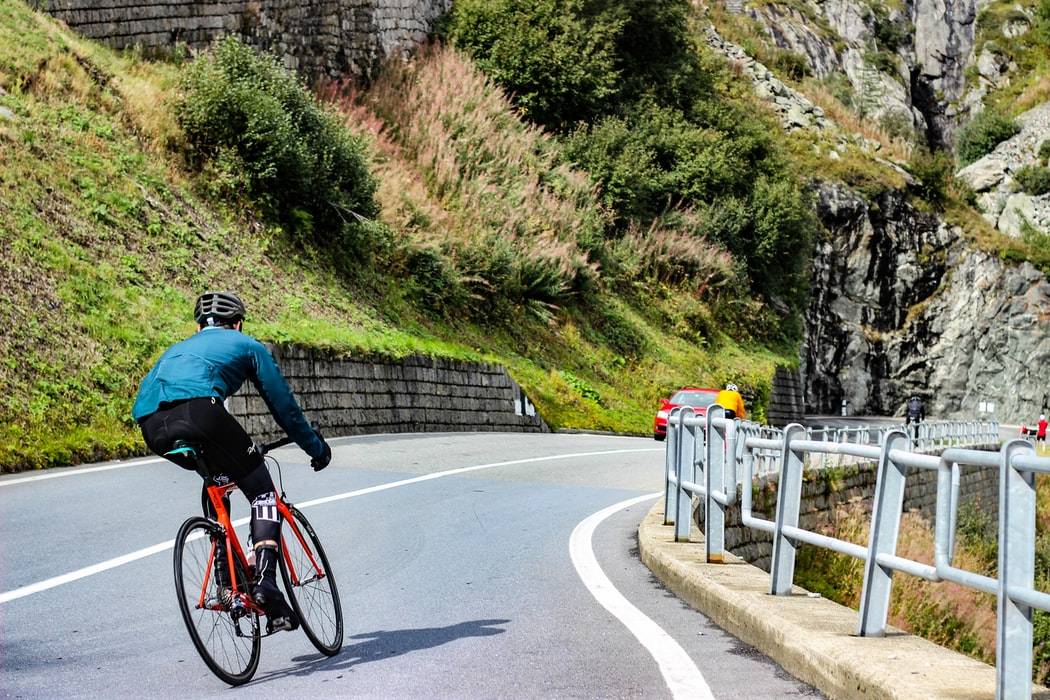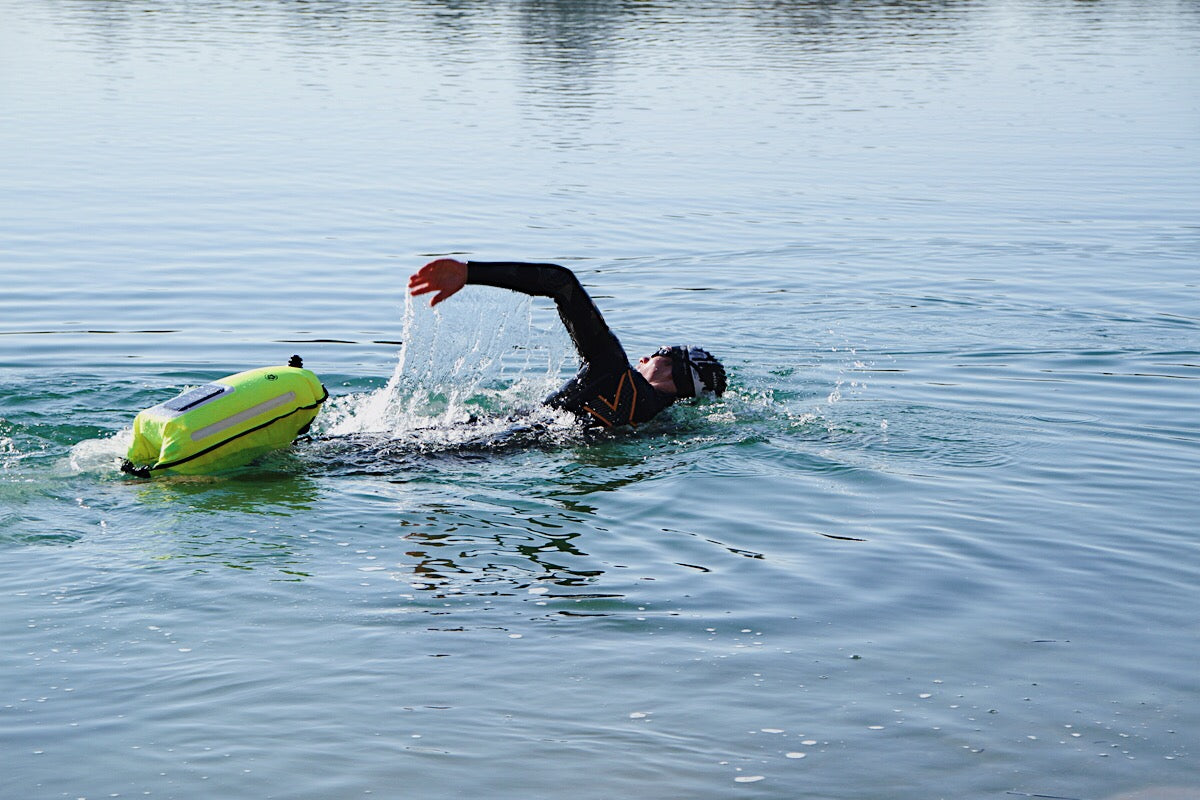Andreas Fuchs recently attracted media and police attention. On a training ride, the Austrian triathlete sped through the town of Illmitz/Burgenland at a whopping 63 instead of the prescribed 50 km/h. Result of the jaunt: 193 euros fine. What many do not know, however, is that 63 km/h would not be illegal in German towns. Who would have known?
5 cyclists, 10 opinions – this is how the situation can be described when cyclists are discussing what they think is the correct behavior on the road. Many legends persist to this day. It is still believed that a racing bike is a bike that weighs less than 12 kilograms or that you can switch to the road if you drive in a sporty manner. The current issue of SPIEGEL from September 12, 2011 denounced the brutalization of morals in its lurid title “The Street Fight” and believes that cyclists are fighting, bullying and jostling road users. In order to shed some light on the legal darkness, we fought our way through the thicket of the StVO, StVO-VwV, StVZO, and StVG - with some surprising findings.
What is a racing bike?
Everyone is probably able to distinguish a racing bike from a normal bike. Criteria such as the handlebars, clipless pedals or weight are often used. The amazing thing is that the law does not differentiate between different types of bicycles. Both a mountain bike and a racing bike are legally bicycles and these are defined according to the Vienna Road Convention of November 8, 1968. According to this, a bicycle is “any vehicle with at least two wheels that can only be driven by the muscle power of people on it, in particular with the help of pedals or hand cranks.” This also includes racing bikes. The law only mentions the term racing bike in connection with lighting equipment in the Road Traffic Licensing Regulations (StVZO). Most lawyers come to the opposite conclusion: where the law does not explicitly mention the term racing bike, it can be subsumed under the term bicycle. The law therefore owes us the definition of a racing bike.
What should a racing bike be like?
In principle, the regulations for bicycles also apply to racing bikes. The roadworthiness of bicycles depends on the Road Traffic Licensing Regulations (StVZO). According to this, a racing bike would be roadworthy if, among other things, enough reflectors, a bright-sounding bell, two independent brakes and a suitable lighting system were installed. However, the StVZO allows an exception for the lighting system: A special regulation applies to bicycles, in this case racing bikes, with a weight of no more than 11 kilograms. Instead of the otherwise prescribed dynamos, battery and accumulator-operated lights may also be used. These lights, colloquially known as "stick lights", do not have to be mounted on the bike, but must be carried with you at all times. General life experience shows that theory and practice sometimes diverge from each other. Which racing bike is already equipped with reflectors or a bell? What is common practice does not have to be legal - as in this case.
Am I allowed to drive on the street?
The law is clear here: cyclists generally have to use the cycle path if the respective direction of travel is marked with the signs 237, 240 or 241. This obligation can be deviated from if it seems unreasonable to use the cycle path. When determining the unreasonableness, the same standards apply to racing cyclists as to all other cyclists. An exception is the closed group of 16 cyclists or more. In this case, you can ride side by side on the road even if there is a mandatory cycle path. This regulation also applies to all types of bicycles and is not limited to racing bikes.
So much for the wording of the law. Last year, the Federal Administrative Court had to deal with the question of the obligation to use cycle paths. The judgment of November 18, 2010 states in its guiding principle: "A cycle path use obligation may only be ordered if, due to the special local conditions, there is a dangerous situation that significantly exceeds the general risk of a legal interest being impaired." The background to the judgment was a plaintiff who has objected to the obligation to use a cycle path on the grounds that it is safer to travel on the affected road sections. The court followed his reasoning and in the present case could not determine a so-called qualified risk situation (a q. G. exists if the damage to the protected property has already started or is imminent and a significant legal property is threatened) that would require an order to use the bike path would allow.
The court has thus strengthened the rights of cyclists and now recognizes them as equal road users. This is above all of practical relevance: According to the wording of the law, the cycle path must always be used, unless in exceptional cases the road can be used instead. According to the fundamental judgment, cyclists are now always allowed to use the road, provided that there is no qualified risk situation that makes it appear permissible to impose an obligation to use bicycles. It can only be hoped that municipalities and cities will take the judgment into account and clear out Germany's signage landscape accordingly. In any case, they are legally obliged to do so.
Do I have to wear a bike helmet?
In Germany, there is no obligation to wear helmets in road traffic, neither for cyclists nor for racing cyclists. But: When it comes to questions of compensation law, the bike helmet plays a key role. According to the Munich Higher Regional Court, cyclists who suffer a head injury in an accident must be considered to be at fault if they were not wearing a helmet. At least that's the case if you were traveling with a racing bike. In the judgment of March 3, 2011, the competent judges stated that a cyclist using a racing bike with clipless pedals already had what is known as prima facie evidence of a "sporty riding style", which justifies the obligation to wear a protective helmet. Complicated sentence, in a nutshell: If you ride a racing bike with clipless pedals, you can attest to a sporty riding style. If you drive sporty, you can be held responsible for a head injury if you don't wear a bicycle helmet. The verdict is unsatisfactory because it fails to define a racing bike.
In addition, it seems inadequate to generally assume a sporty driving style on a racing bike with clipless pedals. Not every racing cyclist is concerned with reaching the highest possible speed. In order to avoid such problems, every racing cyclist with clipless pedals can be advised to wear a bike helmet, for safety anyway, but above all for legal reasons.
Speed limits for cyclists?
Hard to believe, but true: In Germany it would not be illegal to exceed the speed limit of 50 km/h in built-up areas. Speed limits within built-up areas (50 km/h) and outside built-up areas (100 km/h) do not apply to cyclists, as the law in the context of the relevant standard speaks of motor vehicles, which does not include bicycles. Nevertheless, cyclists do not have a free ticket, because the general clause applies in general, according to which it says: “The driver may only drive so fast that he can control his vehicle at all times. He has to adapt his speed in particular to the road, traffic, visibility and weather conditions as well as his personal abilities.” Furthermore, every road user has to observe the general principle of mutual consideration in road traffic. Courts therefore regularly come to the conclusion that cyclists have to drive as fast as is generally expected of them. According to the tenor of the judgment, a cyclist cannot be expected to reach speeds that are otherwise only reached by motor vehicles that require a driver's license.
For vehicles, ie including bicycles, all route prohibition signs apply. This includes all speed limits that are ordered by sign (sign 274). A cyclist is therefore not allowed to drive faster than 30 km/h in a 30 km/h zone and must keep to walking speed in a traffic-calmed area.
Cycling on and off road
If you talk to cyclists, you sometimes come across the prejudice that special regulations apply to racing cyclists who are on the road for sporting purposes. Whether and to what extent a cyclist does sport, ie does physical exercise, is mostly a question of internal motivation, which cannot be conclusively determined from the outside. Even those who use a racing bike do not necessarily do so for sporting reasons, not least because the law does not oppose the classification of racing bikes in road traffic. Logically, this means that cyclists are also allowed to be on the road for sporting purposes, of course in compliance with the legal provisions of the Road Traffic Act.
The situation is different for cycling events, which in turn are not included in the common use. That's why a permit is required for cycle races, ie an official permit. Racing bikes are only completely exempt from the regulations of the Road Traffic Act for the period of participation in approved road races. Since 2004, the World Cycling Union (UCI) has made helmets compulsory for all official cycling races.
Bicycle touring events (RTF), also known as everyone's races, are not cycling events in the sense of cycling races. If it is important in cycling races to cover a certain distance at the highest possible speed, stands by
Cycling tours or cycling tourism events focus on mastering the route. Therefore, no ranking lists are published at such events. The StVO is relevant during such cycling events.
Conclusion
What remains is the weary realization: Legal theory and reality have sometimes diverged blatantly, as the question of roadworthy racing bikes proves. But even inconsistent case law, some of which contradicts the wording of the law, does not contribute to the legal certainty of cyclists, especially racing cyclists.
Speaking of racing bikes: It is particularly unsatisfactory that, in contrast to our neighboring country Austria, there is still no uniform definition of racing bikes ex lege. According to the law, the road bike is a bicycle like any other. However, the fact that courts have broken this rule when attributing damage also contributes to the general uncertainty among racing cyclists. A ray of hope was the landmark judgment of the Federal Administrative Court, which now recognizes cyclists as equal road users and has clarified the obligation to use cycle paths.




















